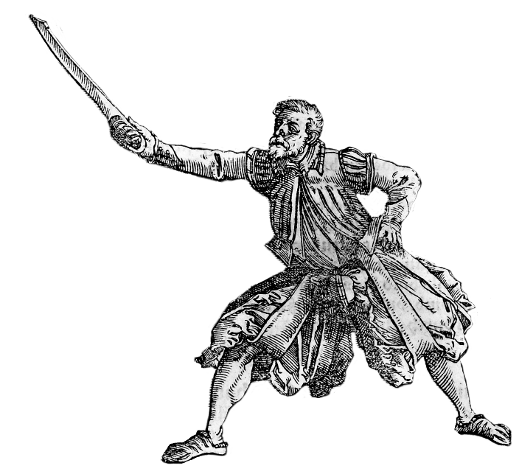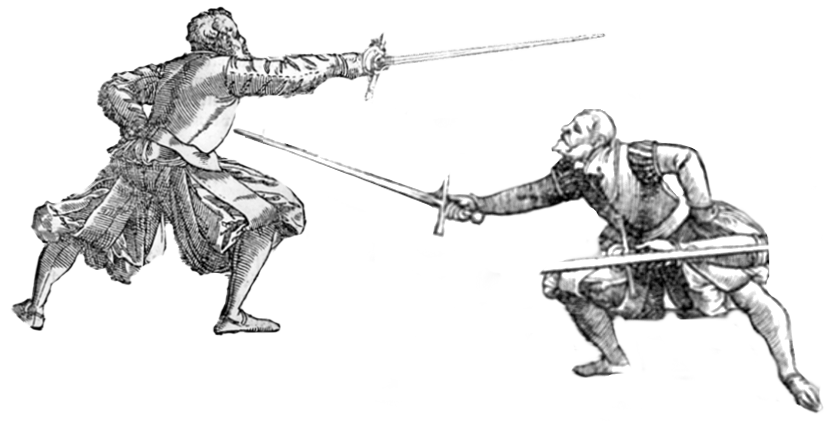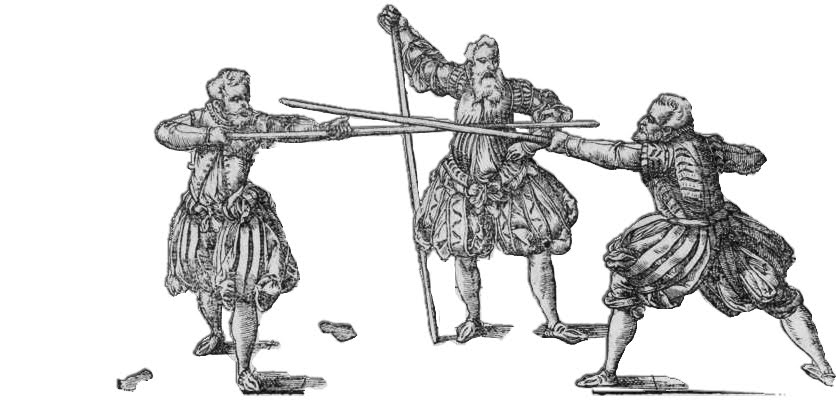Gerade Versetzung
(Created page with "===Straight Parrying=== ==Longsword== The straight parrying is a Langort like position in which the long edge is turned against the opponent's blade in an extended parry.") |
|||
| (2 intermediate revisions by one user not shown) | |||
| Line 3: | Line 3: | ||
==Longsword== | ==Longsword== | ||
| − | The straight parrying is | + | The straight parrying is somewhat like the [[Langort]] like position in which the long edge is turned against the opponent's blade in an extended parry. An argument can be made that the point may be slightly elevated compared to the hands in this guard, giving somewhat better protection as a parry. |
| + | |||
| + | ==Dussack== | ||
| + | |||
| + | The straight parrying in the Dussack is otherwise known as the [[Schnitt]]. The straight parrying differs from [[Langort]] (longpoint) in that the point is elevated to allow parrying off to either side. | ||
| + | |||
| + | [[File:Dussack_GeradeVersetzung.png | center]] | ||
| + | |||
| + | ==Rappier== | ||
| + | |||
| + | The straight parrying with the rappier is again similar to [[Langort]], though again not at the full extent of the longpoint, but rather with the slightly lowered hand and raised point to aid parrying. The image below contrasts the how we might interpret the lonpoint (on the left) vs the straight parrying (on the right). | ||
| + | |||
| + | [[File:RappierLongpointStraightParrying.png | center]] | ||
| + | |||
| + | ==Polearm== | ||
| + | |||
| + | [[File:Staff middleguard.jpg | center]] | ||
| + | |||
| + | The straight parrying with the staff is also called [[Mittelhut]]. From high guard lower the staff to be directly in line with the opponent’s chest/face. The rear hand remains high so the staff sticks out and threatens the thrust. | ||
Latest revision as of 04:10, 19 September 2017
Contents |
[edit] Straight Parrying
[edit] Longsword
The straight parrying is somewhat like the Langort like position in which the long edge is turned against the opponent's blade in an extended parry. An argument can be made that the point may be slightly elevated compared to the hands in this guard, giving somewhat better protection as a parry.
[edit] Dussack
The straight parrying in the Dussack is otherwise known as the Schnitt. The straight parrying differs from Langort (longpoint) in that the point is elevated to allow parrying off to either side.
[edit] Rappier
The straight parrying with the rappier is again similar to Langort, though again not at the full extent of the longpoint, but rather with the slightly lowered hand and raised point to aid parrying. The image below contrasts the how we might interpret the lonpoint (on the left) vs the straight parrying (on the right).
[edit] Polearm
The straight parrying with the staff is also called Mittelhut. From high guard lower the staff to be directly in line with the opponent’s chest/face. The rear hand remains high so the staff sticks out and threatens the thrust.


